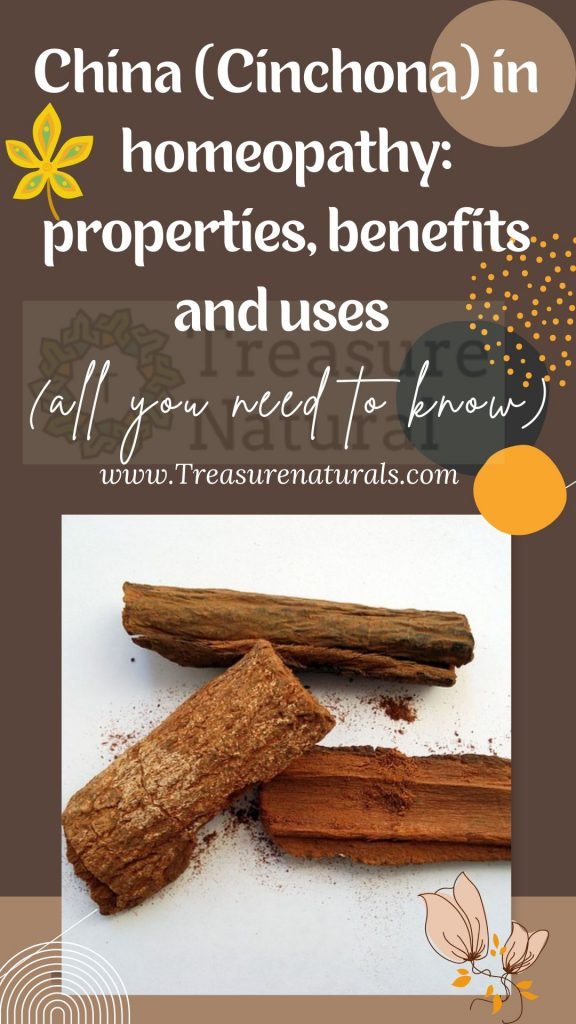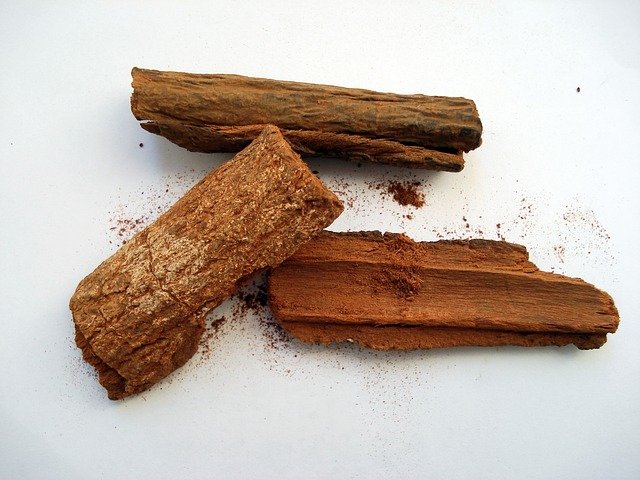
China is a homeopathic remedy extracted from the bark of plants of the genus Cinchona, a species belonging to the Rubiaceae family that grows in South America. This remedy is indicated: in asthenic, anemic subjects, hypotheses and subjects to lipothymia following hemorrhages or loss of organic fluids.
The plant of china
China is a generic term that in the botanical field indicates several species of plants of the genus Cinchona, belonging to the Rubiaceae family. These are generally rather large trees that grow between 1,000 and 3,500 meters above sea level.
China, in particular, is widespread mainly in Ecuador, Colombia and in some areas of Asia (Java) and Africa. It is a tree that grows up to 20-25 m, the bark of which is reddish brown; its leaves are 25-40 cm long, have an elliptical shape and have a color of the lower part tending to red; its flowers, on the other hand, are tubular and pink-red.
The beneficial properties of this plant are extracted from the bark that is dried in special dryers, where the temperature varies between 70 and 80 ° C.
As soon as it is harvested, the bark of the China tree has a whitish color, but tends to take on a brownish-red or yellow-brown color after brief contact with air.
China: history and legend
China was imported from Peru in the seventeenth century and immediately became known for its effectiveness in the treatment of intermittent fevers.
It was the Jesuit fathers, and in particular Father Bernabè Cobo (Spain 1582 – Lima 1657), who brought the plant to Europe so much so that, starting from 1632, the use of the “pulvis gesuiticus” or “dust of the Fathers” also spread in Italy.
According to legend, the name of the plant comes from Ana de Osorio Chinchón, wife of the viceroy of Peru, who recovered from intermittent fever thanks to the properties of the bark of China. Also according to this tradition, the Countess, to thank for the healing, arranged the care of the poor of Lima and advertised the “dust of the Countess” also in Spain (1640).
In subsequent years, exactly between 1817 and 1820, the two French researchers Pierre Joseph Pelletier and Joseph Bienaimè Caventou managed to extract from the bark of the tree the active ingredient, namely quinine, which for some time was used in Allopathic Medicine.
Quinine in allopathic medicine
Quinine is a drug of considerable effectiveness against the four species of Plasmodium that cause malaria in humans (Plasmodium falciparum, Plasmodium vivax, Plasmodium ovale and Plasmodium malariae).
Quinine was the drug mainly used for the treatment and prophylaxis of malaria until chloroquine was introduced. Today, however, it seems that its usefulness is being rediscovered as important and widespread resistance to chloroquine has been manifested.
This drug, despite being useful in the treatment of various manifestations, also has side effects: diarrhea, vomiting, hearing disorders, visual problems, but also very serious arrhythmias. It is therefore contraindicated for those patients suffering from cardiac conduction disorders.
China : homeopathic remedy
China is a homeopathic remedy with many healing virtues whose Mother Tincture is obtained by maceration of the bark powder in alcohol at 70 °, or by grinding the powder itself with lactose.
China was the first medicine experimented by Samuel Hahnemann (Germany 1755 – Paris 1843) to prove the veracity of the Theory of Similarity, already enunciated by Hippocrates, which became the foundation of Homeopathy. If the extract of China, which was used for the treatment of malaria, was able to cause the disease in a healthy organism, a rule could be drawn: what triggers a disease in a healthy individual, can also heal it in the sick person.
The China remedy is indicated both in the treatment of acute and chronic cases and in particular is indicated in asthenic, anemic, hypothesis and subject to lipothymia following hemorrhages or loss of organic fluids.
What China is for
China is used in Homeopathy for the treatment of the following ailments:
- bleeding
- epistaxis
- polymenorrhea
- menorrhagia
- diarrhoea
- vomit
- headache
- dizziness
- spasms
- gallbladder disorders
- chronic fatigue syndrome
- anemia from blood loss
- asthenia after fatigue, sexual excesses or after excessive sweating
- abdominal swelling and bloating (of the entire abdomen)
- ear ringing
The China type in homeopathy

China is a predominantly endoblastic remedy, therefore suitable for subjects of carbonic constitution. The subject cured through the homeopathic remedy China is usually of dark or olive complexion, robust but constitutionally exhausted by debilitating secretions.
These are mostly apathetic, taciturn, dejected patients, who do not like company and suffer from excesses of anger; they often feel mistreated and are hypersensitive to criticism.
The China type suffers from eating disorders with excessive flatulence: he has a voracious appetite but even a light meal causes him discomfort as he has problems with digestion.
The most characteristic aspects of his personality are:
- a strong anxiety-depressive state
- irritability
- indolence
- tendency to blame others for their own failures
- sensory and emotional hyperesthesia
- anxiety
- abulia and apathy
In addition, the subject China:
- worsens with cold and dampness; in autumn and summer; after meals; during and after defecation; at the minimum draft; after any mental or physical exertion
- improves with the heat, with strong pressure on the painful area and bending in two






